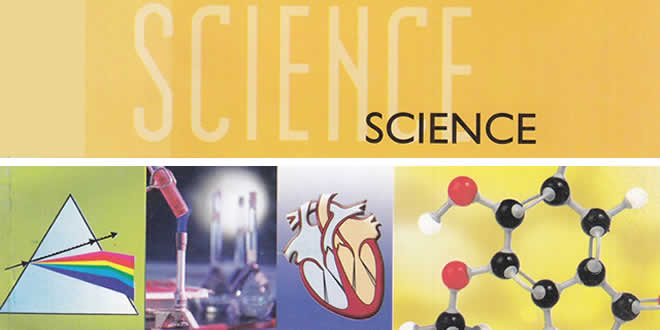Carbon and its Compounds MCQs: CBSE Class 10 Science Chapter 4 Carbon and its Compounds Multiple Choice Questions with Answers. MCQ Questions for Class 10 Science with Answers was Prepared Based on Latest Exam Pattern. Students can solve NCERT Class 10 Science Carbon and its Compounds Multiple Choice Questions with Answers to know their preparation level.
| Class: | 10th Class |
| Subject: | Science |
| Chapter: | Chapter 04: Carbon and its Compounds |
| MCQs: | 20 Questions |
| Quiz: | – Questions |
Carbon and Its Compounds MCQs
MCQs for Class 10 Science Carbon and its Compounds with Answers & Explanation:
1. Which of the following statements are correct for carbon compounds?
(i) Most carbon compounds are good conductors of electricity.
(ii) Most carbon compounds are poor conductors of electricity.
(iii) Force of attraction between molecules of carbon compounds is not very strong.
(iv) Force of attraction between molecules of carbon compounds is very strong.
(a) (ii) and (iv)
(b) (ii) and (iii)
(c) (i) and (iv)
(d) (i) and (iii)
Answer 1.
2. C3H8 belongs to the homologous series of
(a) Alkynes
(b) Alkenes
(c) Alkanes
(d) Cyclo alkanes
Answer 2.
3.

(a) 2-ethyl-2-methyl propane
(b) 2, 2-demethyl butane
(c) 1,1,1-trimethyl propane
(d) 2, 2-methyl butane
Answer 3.
4. Which of the following is the formula of Butanoic acid?

Answer 4.
5. The number of isomers of pentane is
(a) 2
(b) 3
(c) 4
(d) 5
Answer 5.
6. Which of the following will undergo addition reactions?
(a) CH4
(b) C3H8
(C) C2H6
(d) C2H4
Answer 6.
7. When ethanoic acid is treated with NaHCO^ the gas evolved is
(a) H2
(b) CO2
(c) CH4
(d) CO
Answer 7.
8. Ethanol on complete oxidation gives
(a) acetic acid / ethanoic acid
(b) CO2 and water
(c) ethanal
(d) acetone / ethanone
Answer 8.
9. Which of the following will give a pleasant smell of ester when heated with ethanol and a small quantity of sulphuric acid?
(a) CH3COOH
(b) CH3CH2OH
(c) CH3OH
(d) CH3CHO
Answer 9.
10. Name the functional group present in CH3COCH3.
(a) Alcohol
(b) Carboxylic acid
(c) Ketone
(d) Aldehyde
Answer 10.
11. Why does carbon form compounds mainly by covalent bonding?
(a) There are four electrons in the outermost shell of carbon.
(b) It requires large amount of energy to form C4+ or C4sup>4-.
(c) It shares its valence electrons to complete its octet.
(d) All the above.
Answer 11.
12. Addition reactions are undergone by
(a) saturated hydrocarbons (alkanes)
(b) only alkenes
(c) only alkynes
(d) both alkenes and alkynes
Answer 12.
13. Identify ‘A’ in the following reaction:
CH3COOH + Na2CO3 → A + CO2 + H0O
(a) CH3COONa
(b) CH2(Na)COOH
(c) NaOH
(d) NaHCO3
Answer 13.
14. Which of the following belongs to homologous series of alkynes?
C6H6, C2H6, C2H4, C3H4.
(a) C6H6
(b) C2H4
(C) C2H6
(d) C3H4
Answer 14.
15. A hydrocarbon has four carbon atoms. Give its molecular formula if it is an alkene.
(a) C4H10
(b) C4H8
(C) C4H6
(d) C4H4
Answer 15.
16. Identify A and B

Answer 16.
17. Give the IUPAC name of CH3COOC2H5.
(a) Ethyl ethanoic acid
(b) Butanoate
(c) Ethyl ethanoate
(d) Etyl methyl carboxylic acid
Answer 17.
18. The first member of the alkyne homologous series is
(a) propyne
(b) ethyne
(c) methane
(d) ethene
Answer 18.
19. In diamond, each carbon atom is bonded to four other carbon atoms to form
(a) a hexagonal array
(b) a rigid three-dimensional structure
(c) a structure in the shape of a football
(d) a structure of a ring
Answer 19.
20. A soap molecule has a
(a) hydrophobic head and hydrophobic tail
(b) hydrophobic head and hydrophilic tail
(c) hydrophilic head and hydrophilic tail
(d) hydrophilic head and hydrophobic tail
 Class Notes NCERT Solutions for CBSE Students
Class Notes NCERT Solutions for CBSE Students





